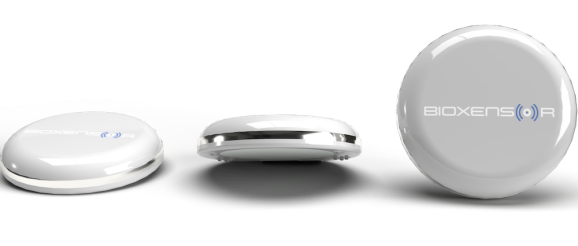The working behinds the “world’s first” non-invasive CGM multi-sensor device – Med-Tech Innovation

Inevitably, claims of being a “world-first” can lead to some dispute – but GlucoRx has stated it is the world’s first multi-sensor device, acknowledging that there are some other devices that have been developed but have yet to come to market. The multi-sensor approach is what the company says is unique.
Nilesh Nathwani, CEO of GlucoRx, said: “I think that historically people have always used just one technology to measure glucose, and haven’t used this approach. The idea with using multi sensors is that you can compensate and modulate for the artifacts and improve the accuracy. That’s why we believe this is the first.”
The multi-sensor approach is used alongside Radio Frequency (RF). One of the main challenges that Nathwani outlines is getting all the sensors into something weighing 14g and measuring 42mm in diameter by 7mm for the user to wear.
“What we’ve done is we’ve taken the learnings from the last clinical study on the Gen 3 device and created a design to manufacture product. We’ve included the human factors with the understanding of what the market requires for a product like this.
“We’ve reduced the size and added a full array of sensors in the device. You’ve got your RF sensor, a near infrared stroke PPG sensor, a bioimpedance sensor and all three of those are capable of measuring blood glucose. In addition to that and to improve the accuracy, we have a 9-axis accelerometer, barometer, temperature sensor humidity sensor, pressure sensor and an ECG sensor.
“We managed to get all these sensors into a device which is so small and discreet. The challenge if you ask me has been to encompass all those sensors and all that technology into a form factored product which can be suitable for commercialisation.”
The device works for 2-3 days alongside a companion app for ease and convenience for the user to act upon its readings and will take up to 30 minutes to charge.
Nathwani was full of the praise for the team behind the product which involved a significant redesign because of supply chain difficulties. The initial sensor that was designed had few sensors in it than the one the company hopes to bring to market at some point in 2023, following submission in the first quarter of next year for CE and FDA approval.
Pressures on the supply chain meant longer lead times and the company couldn’t acquire the components required for the initial design – meaning a redesign was required.
Despite all the additional sensors that now feature as part of the product, Nathwani has stressed a simple point to it.
“It is a blood glucose monitoring device. It’s just that when we put all the other sensors in there to improve the accuracy. We know that we can use those sensors to measure activity, heart rate, heart rate variability, respiration rate, SPO2, ECG, temperature and so on. The device measures a lot of parameters, but primarily it is a blood glucose monitor.
“When people open this up, and we’ve obviously had other industry experts look at the design, they all say “wow, how have you managed to do this?” They’ve been absolutely amazed.”
In recent years, the company has focused on research and development in a bid to develop something that gives a clearer picture of glucose measurements to make it more affordable and pain free. Nathwani says they have developed something they feel is the future of blood glucose monitoring – particularly in relation to measuring immediate blood results as opposed to interstitial fluid glucose.
“With that in mind, you can do a lot more. It can become a preventative behavioural tool.”
With sustainability a key focus across many sectors, GlucoRx is keen to highlight what it feels are its green credentials. Rather than being disposable after a period of up to a fortnight, this is a rechargeable device – much like consumer devices including smartwatches – and can last for up to four years.
When the product eventually comes to market, the company envisions a subscription model, with the aim of making it as affordable as possible.
